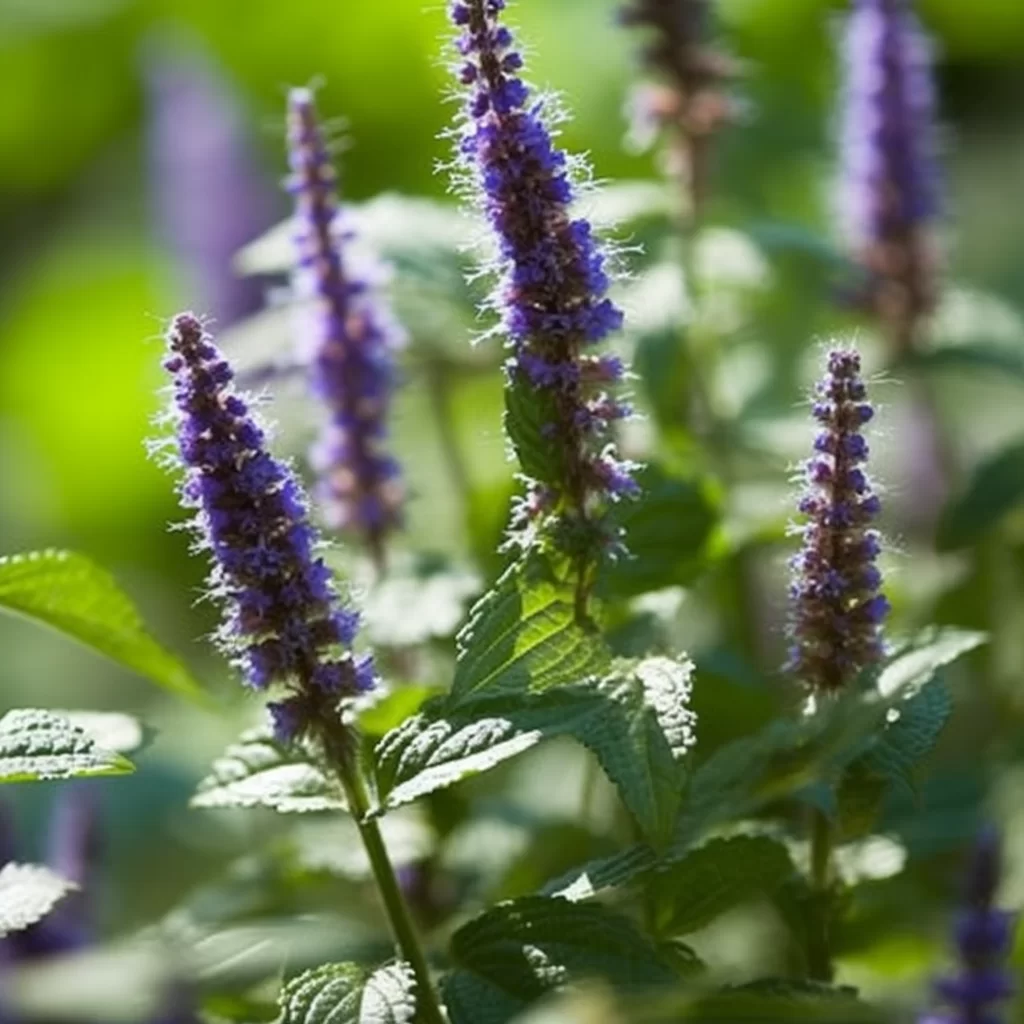Story of Day :
Contents
The Anise Hyssop Plant: A Complete Guide and Care Tips
If you’re looking for a beautiful, fragrant plant to add to your garden, look no further than the Anise Hyssop plant.
This herbaceous perennial is known for its stunning blue-purple flowers and an anise-like scent that can attract bees, butterflies, and hummingbirds.
Here’s everything you need to know about this charming plant.
History of Anise Hyssop
Anise hyssop (Agastache foeniculum) is native to North America where it has been used for medicinal purposes by indigenous communities for centuries.
It was introduced in Europe in the 16th century as a medicinal herb but soon gained popularity as an ornamental plant because of its attractive flowers.
Characteristics of Anise Hyssop

The anise hyssop is a clump-forming perennial herb that can grow up to four feet tall and two feet wide.
Its leaves are toothed, lance-shaped with a bluish-green color that forms a basal rosette at the bottom of the stem.
The flowers bloom in mid-summer on long spikes that can be up to six inches long with various shades ranging from light lavender-blue or purple-pink.
Varieties of Anise Hyssops
- ‘Blue Fortune’: This variety has striking blue-purple flowers on upright stems growing up to four feet tall.
- ‘Golden Jubilee’: The leaves have yellow-chartreuse foliage while the lavender-blue flower spikes bloom later than other varieties during fall.
- ‘Tutti Frutti’ : This vibrant variety produces raspberry-colored blooms on compact plants excellent for small gardens or containers.
How to Plant Anise Hyssop
Anise hyssop is easy to grow and care for, making it an excellent choice for both beginner and experienced gardeners.
Here’s how you can plant the Anise Hyssop:

When to Plant
The best time to plant anise hyssop is in early spring when the soil has warmed up enough, or in fall at least four weeks before the first frost date.
Where to Plant
Anise hyssops prefer full sun but can also tolerate partial shade conditions.
It thrives in well-drained soil that is rich in organic matter but can also tolerate several soil types.
How to Plant
- Dig a hole twice as wide as the rootball of your plant.
- Add compost or manure into the hole and mix with topsoil.
- Carefully remove your Anise Hyssop plant from its container or nursery pot and loosen any tangled roots before placing it into the planting hole.
- Cover with additional soil until level with surrounding ground then water deeply.
Caring for Anise Hyssops

The anise hyssops are drought-tolerant plants that require minimal maintenance, making them perfect additions for low-water gardens or xeriscapes.
Here are some tips on caring for your anise hyssops:
Watering Requirements
Newly planted Anise Hyssp should be watered regularly until established, about 1 inch of water per week during dry spells.
Once established, they require little watering except during prolonged droughts or extreme heat waves.
Soil Fertilization

Anise hyssops do not need frequent fertilizing, but top-dressing with compost or a general-purpose slow-release balanced fertilizer once per year can help to promote growth and flowering.
Pruning
You can prune Anise Hyssop regularly to prevent overgrowth and encourage bushier plants.
Cut back the spent flowers after blooming season to promote a second round of flowering in late summer.
Potential Health Benefits of Anise Hyssop
The anise hyssop has several potential health benefits.
Its leaves have antifungal, antibacterial, and anti-inflammatory properties, which make it useful for treating various ailments:
- Infusing its leaves into tea is believed to relieve digestive problems such as gas, bloating, stomach cramps.
- The plant’s essential oils are also used in aromatherapy for stress relief and relaxation.
In Conclusion
Anise hyssops are versatile plants that can add beauty and fragrance to any garden or landscape.
They’re easy-going plants that require minimal care yet offer great rewards with their attractive blooms and fragrant foliage.